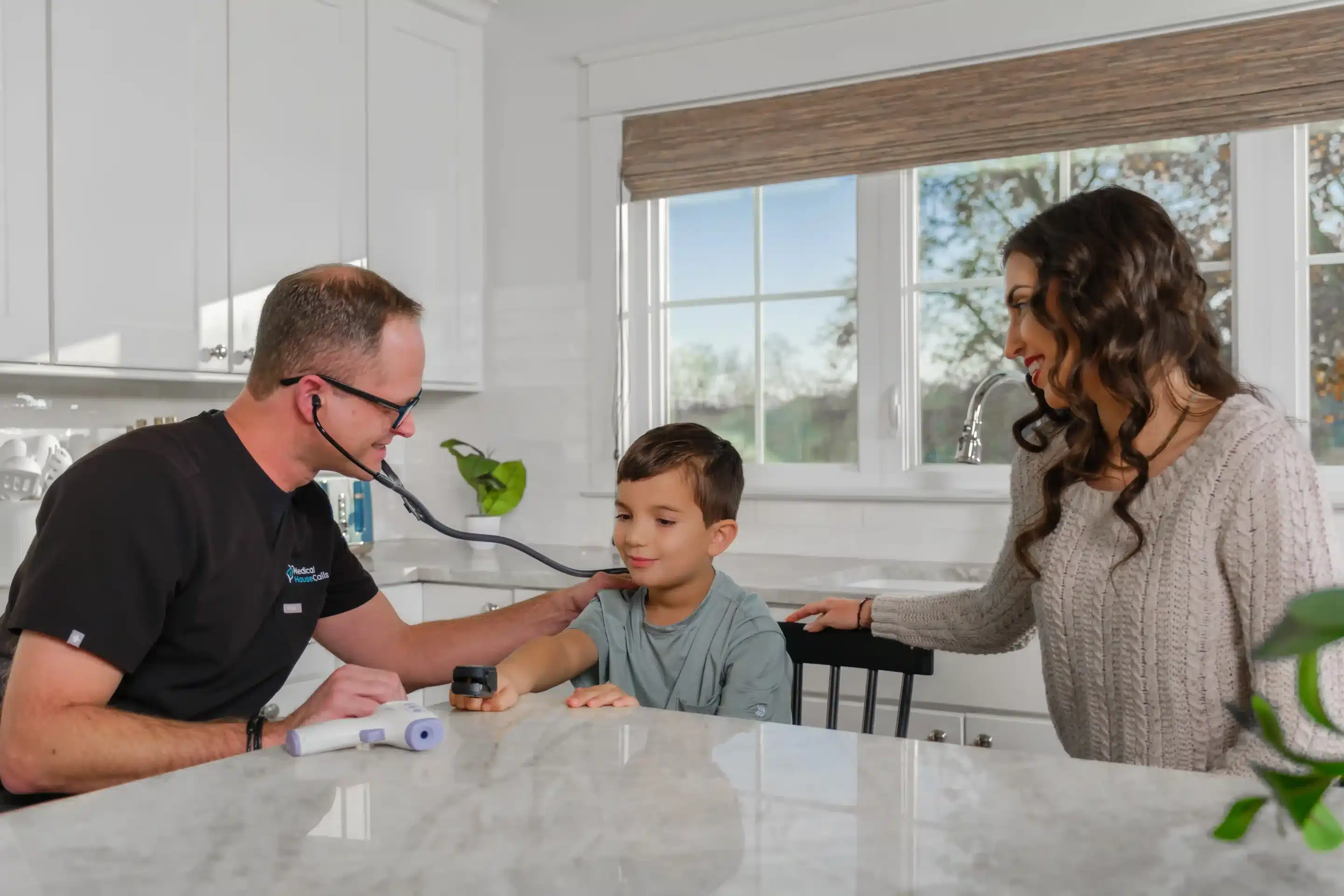Table of Contents
Changing Primary Care Providers: A Step-By-Step Guide
If you’ve been wondering how to change your primary care provider (PCP), you’re not alone. Primary care plays a crucial role in your long-term health, but sometimes, a change is necessary. Whether you’ve moved, had a change in insurance, or simply want a provider that better suits your needs, understanding how to change primary care providers can ensure a smooth transition without disrupting your healthcare.
Switching to a new provider might seem overwhelming, but with a clear plan, the process can be simple. This guide will walk you through everything you need to know about changing primary care providers, from finding a new one to transferring medical records.

Concierge Primary Care At Your Doorstep
Experience primary care without leaving your home. Join our waitlist today and enjoy healthcare tailored to your needs–comfortably and conveniently.
Why You Might Need to Change Your Primary Care Provider
There are many reasons why someone might decide to change their primary care service:
- Relocation – Moving to a new city or state may require finding a new provider.
- Poor Communication or Care – If you feel rushed, unheard, or unsatisfied with your current doctor, it may be time for a PCP change.
- Long Wait Times – If it’s difficult to schedule timely appointments, you might want a provider with better availability.
- Preference for a Different Type of Provider – Some people switch to concierge medicine or in-home primary care for greater convenience.
- Insurance Changes – If your PCP is no longer in-network with your insurance, switching can help avoid higher costs.
Regardless of your reason, learning how to switch primary care providers can help you maintain quality healthcare without disruption.
Steps to Change Your Primary Care Plan
1. Consider Your Healthcare Options
When switching primary care providers, you’ll need to decide whether you want to stay within your insurance network or explore alternative healthcare models like concierge medicine or direct primary care.
If you plan to use insurance, check your policy to see which providers are in-network. Many health plans require you to select a PCP from an approved list, which you can typically find by:
- Visiting your insurance company’s website and using their provider directory.
- Calling customer service for a list of covered primary care physicians.
- Reviewing your policy documents to understand any requirements for a PCP change.
However, insurance networks aren’t your only option. Some patients choose concierge or direct primary care models for more personalized service, shorter wait times, and greater accessibility—often without dealing with insurance restrictions. Medical House Calls, for example, provides in-home primary care services with upfront pricing, allowing you to receive high-quality care without the hassle of insurance approvals or copays.
Before making a decision, weigh the benefits of each approach and determine what works best for your healthcare needs and budget.
2. Research and Choose a New Primary Care Provider
First, you want to find a primary care provider that is right for you. Here are some factors to consider when making a PCP change:
- Location & Accessibility – Choose a provider near your home or one that offers in-home medical visits, like Medical House Calls.
- Experience & Specialties – Consider whether you need a general family care provider, an internist, or a specialist for ongoing conditions.
- Reputation & Reviews – Check online reviews and ask for recommendations from family and friends.
- Office Hours & Availability – Ensure they offer appointment times that fit your schedule.
For those looking for a more convenient healthcare option, Medical House Calls offers primary care services directly in your home, eliminating the need to travel to a doctor’s office.
3. Notify Your Current Provider (If Necessary)
While it’s not always required, notifying your current provider that you’re making a PCP change can help streamline the transition. If you have an ongoing condition, they may provide recommendations or assist with transferring your medical records.
If you’re uncomfortable explaining why you’re switching, you can simply request your records without going into detail.
4. Transfer Your Medical Records
To ensure continuity of care, your new provider will need access to your medical history. Here’s how to change primary care providers without losing important health information:
- Request a medical records transfer – Your new provider may sometimes handle this request for you for a smooth transition.
- Complete a medical records release form – Your previous provider may require written consent to send records.
- Be aware of transfer fees – Some offices charge a small fee for copying and sending records.
- Ask about digital access – Some practices use electronic health records (EHRs) that allow seamless information sharing.
5. Schedule an Appointment with Your New Provider
Once you’ve officially switched primary care providers, schedule an initial visit with your new provider. This first appointment is essential for:
- Establishing your medical history with them.
- Discussing ongoing treatments or medications.
- Setting health goals and preventative care plans.
Come prepared with a list of:
- Medications you’re taking.
- Any recent lab results or imaging.
- Questions or concerns about your health.

Choosing a More Convenient Primary Care Provider
If you’re changing your primary care due to scheduling difficulties, long wait times, or lack of personal attention, consider switching to a more convenient healthcare model.
Medical House Calls offers in-home primary care services, meaning you can receive high-quality medical care without leaving your home. Our services include:
✅ Primary care for all ages
✅ 24/7 Telehealth
✅ Preventative annual physicals & labwork
✅ Rapid referral network
✅ IV therapy and weight loss services
With Medical House Calls, there’s no need to visit a crowded office—our team of providers comes to you.
Frequently Asked Questions
Can I change my primary care provider anytime?
Yes! Most medical practices and insurance plans allow you to switch at any time without issue.
Do I have to notify my current provider before switching?
It’s not required, but it’s helpful if you need to transfer records or request a final prescription refill.
How long does it take to change primary care providers?
The process can take a few days to a few weeks, depending on record transfers and insurance updates.
How do I change my primary care if I have insurance?
Most insurance providers allow you to switch primary care providers at any time, but the process varies. Check your plan’s provider directory and call customer service if you need help updating your selection. Also consider concierge healthcare models.
Final Thoughts
Learning how to switch primary care providers doesn’t have to be stressful. By reviewing your options, researching new providers, and transferring records, you can ensure a smooth transition.
If you’re looking for a more convenient and personalized healthcare experience, consider Medical House Calls—where healthcare comes to you.
Family & Individual Care Available
Enjoy personalized primary care customized for families and individuals, delivered conveniently at home. Discover flexible plans designed to keep everyone healthy and thriving.















